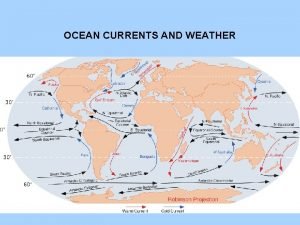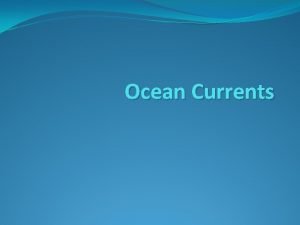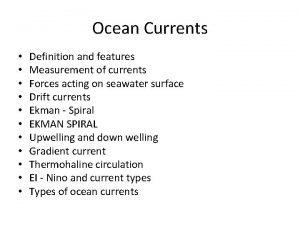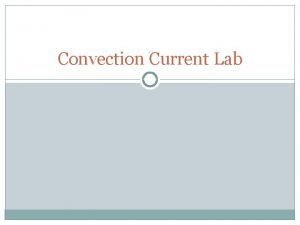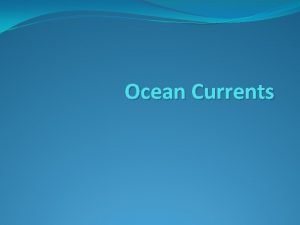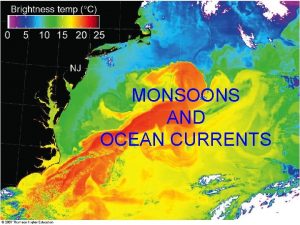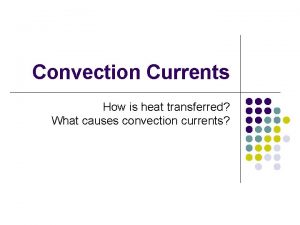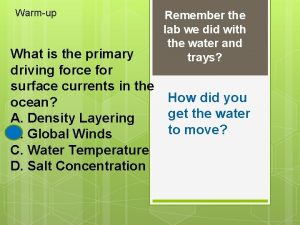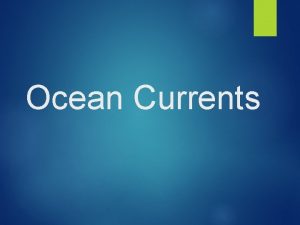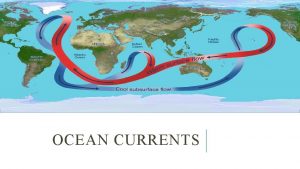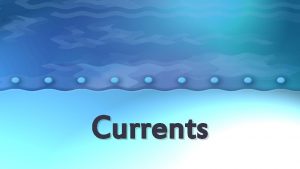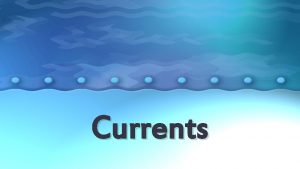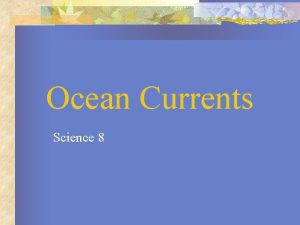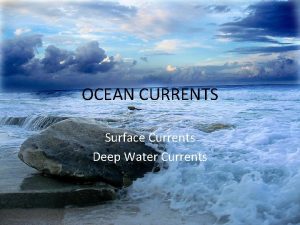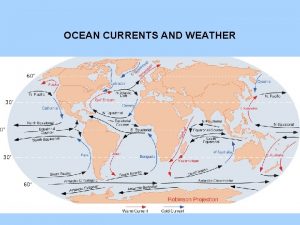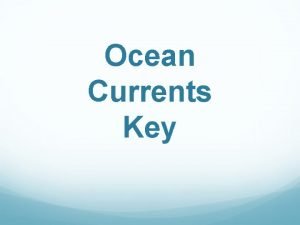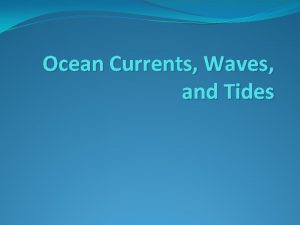Currents and Climate What is a ocean current















- Slides: 15

Currents and Climate

What is a ocean current? ● Ocean currents are masses of water that flow from one place to another. ● Currents can be on the surface of the ocean or in deep water.

Ocean currents move water! And more! http: //img. dailymail. co. uk/i/pix/2007/06_03/duck. GPX 2706_600 x 359. jpg

What are surface currents? ● Surface currents are movements of water that flow horizontally in the upper part of the ocean’s surface. ● The energy that drives surface ocean currents comes from wind

What are Gyres? ● Gyres are large whirls of water within an ocean basin. ● North Pacific ● South Pacific ● North Atlantic ● South Atlantic ● India Ocean

Why do currents move in a circular pattern? ● Because of the Earth’s rotation, currents are deflected to the right in the Northern Hemisphere and to the left in the Southern Hemisphere. ● This is called the Coriolis Effect

Ocean Currents and Climate ● Oceans maintain the balance of heat energy by ocean currents cycling between the equator and the polar regions ● When currents from low-latitude regions move into higher latitudes, they transfer heat from warmer to cooler areas on Earth.

Ocean Currents and Climate ● Ocean currents are especially important to coastal regions ● Warm or cool the air temperatures along these coastal regions ● An example of this is the Gulf Stream which warms the climate of Great Britain

Temperatures in North America

Deep (density) currents ● Deep (density) currents are vertical currents of ocean water that result from density differences among water masses. ● Factors that affect the density of seawater: ● Water temperature ● Salinity ● Decreasing temperature and increasing salinity cause water to become more dense

Deep currents ● Near Antarctica, surface conditions create the highest density water in the world. ● Icicles of Death Link

Deep currents ● Evaporation results in increased salinity— lowering water density. ● A simplified model of ocean circulation is called the conveyor belt.

What is upwelling? ● Upwelling is the rising of cold water from deeper layers to replace warmer surface water ● Winds blow the warm surface water away and it is replaced by cold waters (with lots of nutrients!)

● Deep water is very rich in nutrients and is brought to the surface

What’s the impact of upwelling? ● Upwelling revitalizes the ocean and keeps the ocean healthy.
 Compared with surface currents deep currents are
Compared with surface currents deep currents are Ocean currents waves and tides
Ocean currents waves and tides Www.gulfstreamshutdown.com
Www.gulfstreamshutdown.com Coriolis effect vocabulary
Coriolis effect vocabulary Surface current definition
Surface current definition Convection currents arrows
Convection currents arrows What impact does the ocean have on climate brainpop
What impact does the ocean have on climate brainpop Midnight zone
Midnight zone Ocean currents vocabulary
Ocean currents vocabulary Ocean currents
Ocean currents Cenozoic mammals
Cenozoic mammals What causes convection current
What causes convection current What is the primary driving force behind surface currents?
What is the primary driving force behind surface currents? Rubber ducks ocean currents activity
Rubber ducks ocean currents activity Ocean currents gulf of mexico
Ocean currents gulf of mexico What are ocean currents
What are ocean currents


